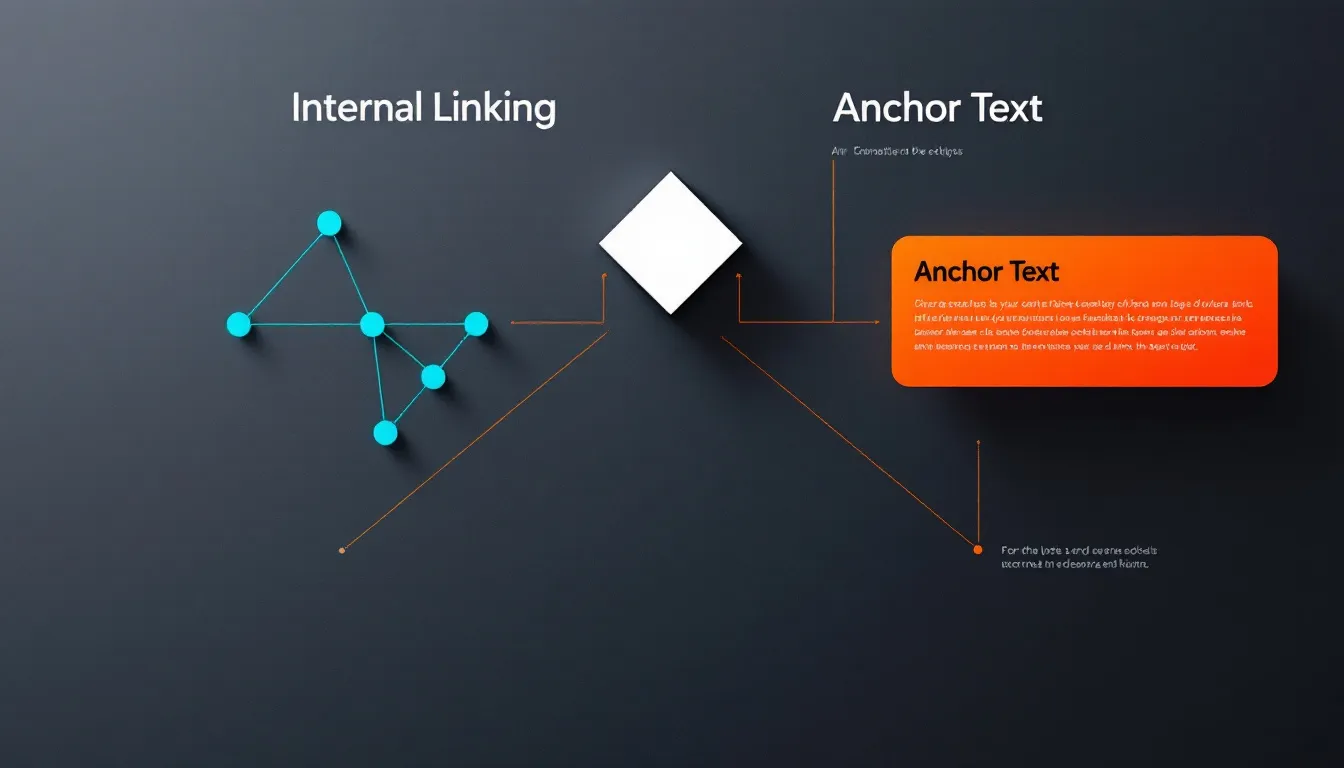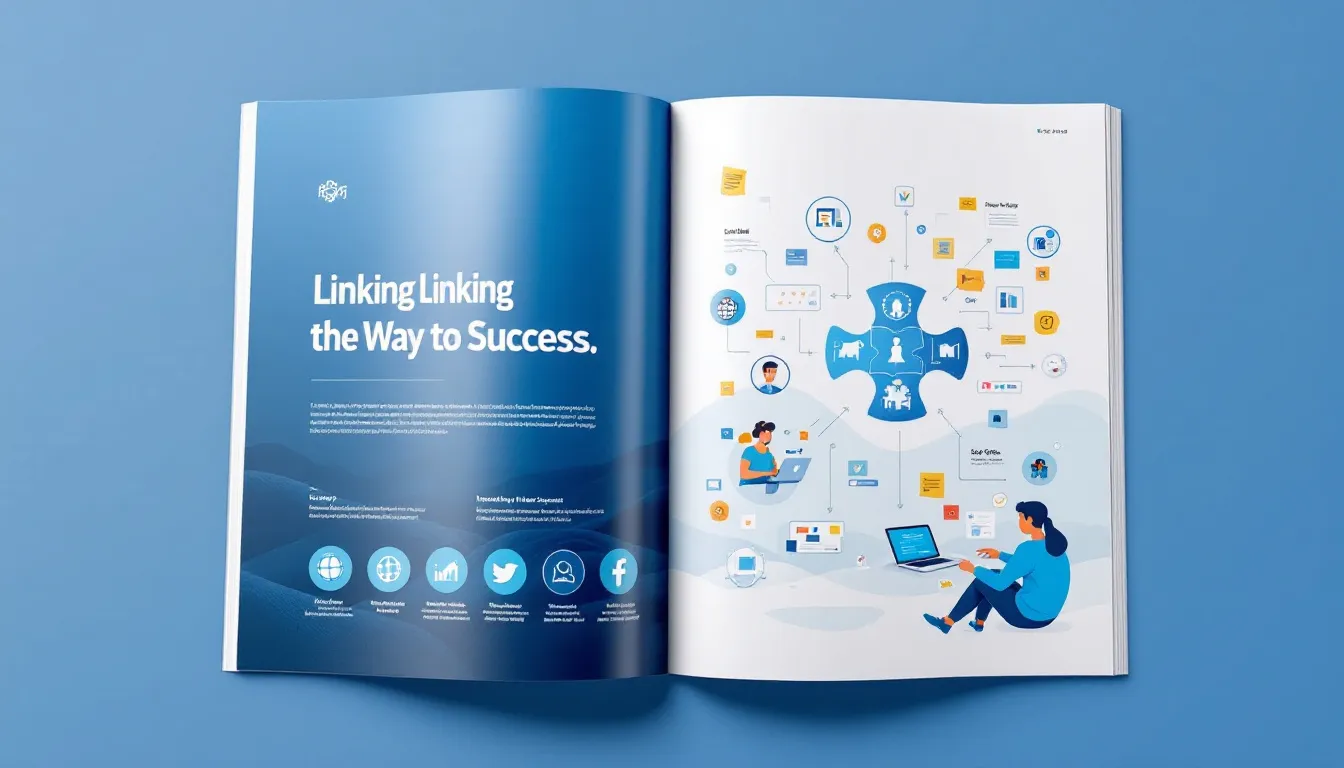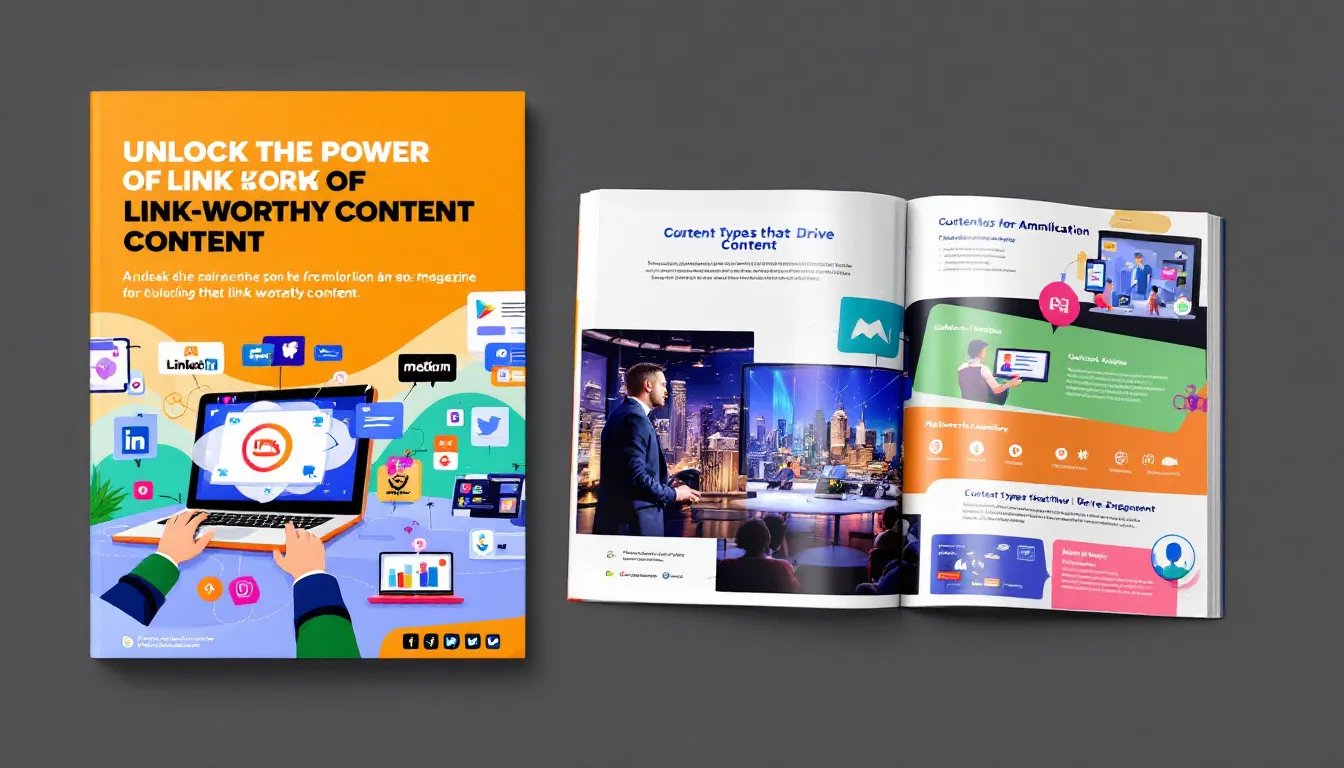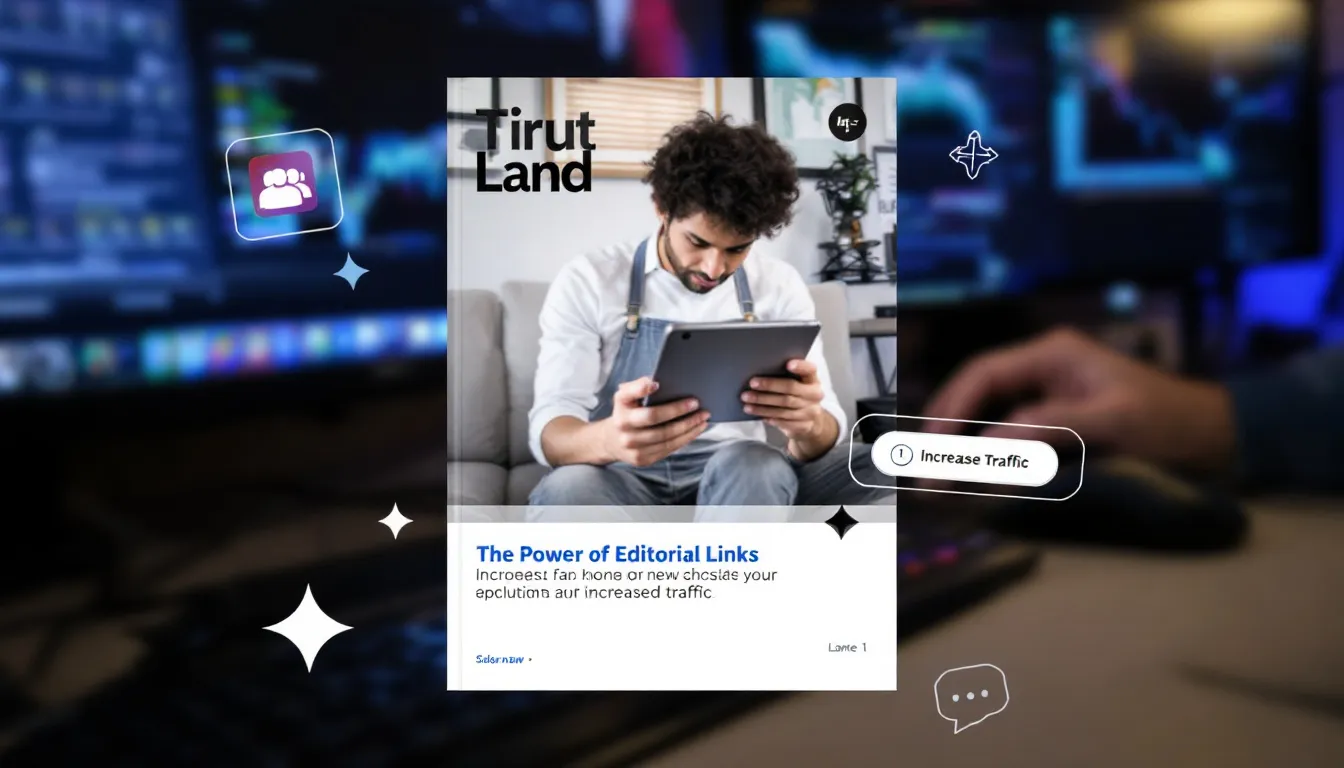Editorial links are high-quality backlinks earned naturally when other websites find your content valuable. They are crucial for SEO because they improve your site’s authority and search engine rankings.
Key Takeaways
- Editorial links are high-quality backlinks earned organically, serving as a vote of confidence for content and improving SEO performance.
- Creating link-worthy content, such as infographics, original research, and comprehensive guides, is essential for attracting editorial backlinks.
- Effective strategies for acquiring editorial links include leveraging public relations, becoming a trusted source, and converting unlinked brand mentions into valuable backlinks.
Understanding Editorial Links

Crafting content that warrants linkage can attract the pinnacle of backlinks, those editorially placed by other sites recognizing your material’s value. Such links are an organic testament to your work’s credibility and worthiness, rather than the result of direct solicitation, mirroring true endorsement.
These superior editorial backlinks not only elevate brand presence but also solidify consumer confidence while aligning with SEO best practices. These high-quality connections adhere strictly to Google’s anti-spam guidelines, offering a secure strategy for improving search rankings.
Fundamentally viewed as endorsements from peer websites, these links broadcast to search engines that your offerings are pertinent and beneficial.
Why Editorial Links Matter
Editorial links are crucial for successful SEO, as they greatly influence a site’s position in Google’s search rankings. These types of links act as endorsements from other authoritative entities, demonstrating to search engines that your content is not just pertinent but also credible. As you gather more high-quality editorial links, the integrity of your backlink profile strengthens, which can result in improved online visibility and higher placement within search engine results.
Aside from enhancing ranking positions, editorial links contribute to driving specialized traffic directly to your website. When respected websites feature a link pointing to your material, it attracts users who have a real interest in what you’re providing. This surge of organic traffic can markedly boost the performance of your site by expanding brand recognition and escalating conversion rates.
How to Create Link-Worthy Content

Producing content that draws in editorial links is fundamental to the efficacy of editorial link building strategies. The aim here is to develop content of such quality that it garners editorial backlinks organically. This means you must weave engaging narratives, undertake novel research, and offer fascinating observations that strike a chord with those who consume your material. Investing time and effort into creating this caliber of content yields significant returns through the acquisition of precious backlinks and an increase in web traffic from organic sources.
Certain kinds of content stand out for their capacity to magnetize editorial links more than others. Infographics and visual elements greatly enhance how shareable your piece is by boosting its aesthetic appeal, original investigations provide fresh perspectives highly regarded by other sites, while exhaustive guides serve as valuable points-of-reference often cited across various platforms.
Exploring these types of activities is important. Reveals why they are integral in crafting materials deemed “link worthy” within websites seeking high-quality connections with relevant topics or industries.
Infographics and Visual Assets
Infographics serve as a potent resource for generating content that merits editorial linking. By condensing intricate data into an accessible and visually engaging format, they become more attractive to users and consequently more likely to be circulated. Their visual appeal plays a crucial role in securing editorial links since presenting information graphically not only clarifies the message but also enhances the chances of your material being distributed and linked by various websites.
Employing infographics as assets that can garner links is instrumental for gaining broader visibility and acquiring valuable backlinks. This method proves to be a pivotal component of your strategy for building editorial links, allowing you to distinguish yourself within the dense digital sphere. Committing resources towards creating premium visual content cultivates materials with higher prospects of being utilized and cited by other sites, thus advancing the quality of your backlink profile significantly.
Original Research and Data
Engaging in original research presents an opportunity to disseminate unique insights that may encourage the acquisition of backlinks. Such content delivers both valuable and frequently singular information which peers within your sector are likely to consider useful and wish to cite.
Presenting fresh data and distinctive perspectives establishes your content as a reliable source for precise and pertinent information, thus enhancing the chances of securing editorial links.
Comprehensive Guides and Tutorials
Extensive guides and tutorials serve as a potent strategy for generating content worthy of links. By providing rich, detailed information, these in-depth materials become prime candidates for reference by other sites. Their utility and credibility make them appealing resources that others are inclined to link to, which can strengthen your site’s backlink profile.
The process of putting together thorough guides and tutorials is crucial for drawing premium editorial backlinks. The substantial value offered within these documents often prompts websites looking to share beneficial content to provide backlinks. Ultimately, such comprehensive resources bolster SEO strategies by establishing authority and fostering trust through valuable opportunities for linking from various sites.
Effective Editorial Link Building Strategies

In order to secure editorial backlinks, it’s imperative that your content stands out and resonates with journalists and influencers. By employing public relations strategies, establishing yourself as a reliable source of information, and transforming mentions of your brand without links into active backlinks, you can fortify your efforts in building editorial links. These tactics are instrumental in naturally earning editorial links that elevate the credibility of your website and its position within search engine rankings.
The application of public relations techniques can dramatically increase the likelihood of obtaining these valuable editorial backlinks. As you become recognized as a reliable authority in your field, you’ll find others more inclined to reference your site with a link. By pinpointing instances where your brand is mentioned but not linked, converting them into live backlinks serves to strengthen your digital footprint even further.
Leveraging Public Relations (PR)
Digital PR leverages press releases and strategic initiatives to alert influencers and journalists about your company’s material. Events worth reporting on or distinctive content may successfully draw attention from the media and generate backlinks, as demonstrated by Vivaldi, which received exposure from specialized technology news outlets through an effective press release. Actively responding to questions from journalists can lead to acquiring valuable editorial links.
The difficulty in utilizing public relations for garnering backlinks lies in crafting stories that merit media interest. Nevertheless, consistently delivering content of superior quality and participating in activities that grab the spotlight can increase your odds of securing editorial links.
Issuing press releases regarding new product introductions is capable of producing substantial media attention along with consequential backlinks.
Becoming a Trusted Source
Earning the trust of others as a reputable brand increases their willingness to create backlinks to your site. Cultivating relationships with journalists and experts within your field can elevate you as a go-to source for editorial content, making use of your expertise to enhance stories. This strategy often results in obtaining valuable backlinks from well-regarded publications that recognize high authority.
It can be quite challenging to obtain links from sites with high authority due to their strict publishing criteria. Nevertheless, if you continually deliver exceptional quality and present distinctive insights, you have the potential to distinguish yourself amidst competition and draw in those coveted links from authoritative websites. Personal case studies showcasing your knowledge and successful outcomes can lead to an influx of acquired links from various sites seeking out such rich content.
Unlinked Brand Mentions
The approach known as unlinked mentions entails identifying occurrences where your brand is referenced without a corresponding link. In situations where your brand is noted but not linked, you have the opportunity to request that they include a link, thereby improving your digital footprint.
By employing this straightforward and efficient method, it’s possible to transform mentions of your brand that lack links into useful backlinks. This can significantly elevate the authority of your website and enhance its SEO effectiveness.
Promoting Your Link-Worthy Content

Enhancing your online presence can boost your visibility and simplify the acquisition of editorial links. Strengthen connections with journalists and bloggers by following them on social media, participating in niche communities, and responding to requests for sources. Press releases are a potent tool for securing media attention and can also aid in gaining backlinks.
Taking part in activities that garner news interest with your brand is a tactical approach. This method may facilitate the generation of press coverage that results in obtaining backlinks.
Outreach to Niche Websites
Targeting websites within your niche that complement your content can boost the possibility of earning backlinks. Delving into and grasping the specifics of your intended niche makes outreach campaigns more fruitful. Promoting content skillfully increases the probability of garnering natural editorial links, while forging connections with journalists in your sector could open additional avenues for such backlinks. It is crucial to develop customized pitches that strike a chord with your intended demographic for effective outreach.
Producing captivating content serves to raise awareness and draw in editorial backlinks from other sources. By concentrating on relevant niche websites and delivering superior quality material, there’s an increased chance that others will take notice and reference it through links on their own sites.
Utilizing Newsletters
Sharing content with a specific audience via newsletters can boost the creation of links. When email newsletters distribute valuable insights, they prompt industry colleagues to reference and link to your material.
When you disseminate high-quality content through newsletters, it raises the likelihood that subscribers and influential figures in the industry will provide editorial links.
Paid Promotions
Investing in PPC advertisements can be an efficient way to raise awareness and may assist in the acquisition of links. Paid promotions offer the advantage of extending your content’s reach and heightening its visibility among specific audience segments.
By weaving paid promotions into your comprehensive strategy for search engine optimization, you increase the likelihood of securing high-quality editorial links effectively.
Benefits of High-Quality Editorial Links

Acquiring high-quality editorial links is essential for boosting content visibility and elevating search rankings, which can lead to a substantial rise in organic traffic for your website. Editorial links foster trust by linking your site with respected publications, thus providing broader exposure to vast audiences. Incorporating these top-tier editorial links into a diverse backlink profile amplifies the effectiveness of a site’s SEO approach.
Ensuring that your backlink profile encompasses a range of editorial links enhances the perceived authority of your site and helps guard against potential penalties from search engines. Such diversity in your backlink portfolio bolsters the credibility and authority of your website in the assessment by search engines.
Enhanced Google Rankings
Authoritative editorial backlinks are highly regarded and can dramatically enhance a website’s position on search engines. Such genuine links also have the potential to increase referral traffic, leading to better visibility and higher user engagement. By providing unique insights and expertise, one can improve the substance of journalistic stories, which often results in earning backlinks.
Sharing original research and statistics within articles contributes valuable support for various arguments presented, frequently resulting in these pieces being linked by others.
Increased Organic Traffic
Building successful connections and conducting outreach with various publications can greatly enhance the visibility of a brand. This improved recognition contributes to higher rankings on Search Engine Results Pages (SERPs), which in turn attracts more organic traffic to your website. Editorial links are essential in augmenting this influx of organic visitors as they strengthen the authority of your site and its visibility on search engines.
Diverse Backlink Profile
Developing a varied profile of backlinks increases your website’s credibility and protects it from possible penalties by Google. Practices like purchasing low-quality links or overdoing guest posts may result in punitive actions from Google against your website.
Searching for instances where your brand is mentioned without a link can be an effective method to enhance your profile of backlinks. A diverse array of backlinks indicates to search engines that the links pointing to your site are organic and have been secured through the provision of high-quality content, which in turn boosts the perceived reliability of your site and its performance in terms of SEO.
Common Challenges in Editorial Link Building
Engaging in editorial link building is advantageous but not without its difficulties. Professionals in the field often grapple with issues like limited time, vying for visibility, and consistently producing content of high calibre. Yet by focusing on the development of varied and superior quality content, one can organically draw backlinks to their site. A diverse assortment of backlinks that includes editorial links minimizes potential penalties from Google.
Securing links from a range of domains diminishes the risk associated with search engines penalizing unnatural linking patterns. To navigate these challenges effectively, it’s imperative to generate distinctive content that is both high-quality and resonates with your intended audience’s interests. Achieving this will enable you to differentiate yourself amid an abundant online environment while enticing authoritative websites to provide valuable backlinks.
Time-Consuming Process
Building editorial links can be a lengthy endeavor. It necessitates crafting content that is worthy of a link by conducting in-depth research and gaining insight into what your audience seeks. If you’re developing online tools or calculators as part of your strategy to garner links, it involves additional time and financial resources to produce compelling material.
In the quest for opportunities to build links, concentrate on identifying old resources ripe for an update with numerous referring domains already in place.
Competition for Attention
Securing links from esteemed publications poses a challenge, as they uphold strict editorial guidelines and often exhibit reluctance toward standard link-building strategies. In the competitive digital realm, it can be quite daunting to capture the attention of such authority websites and entice them to provide links. These authoritative platforms place a premium on content that is both high in quality and pertinent. Thus, offering content of substantial value is critical for earning their endorsements.
To overcome these obstacles, it’s imperative to concentrate on crafting distinctive content of superior quality that resonates with the preferences of your intended outlets.
Maintaining Quality
High-quality editorial links are organic backlinks obtained through content that is deemed valuable, elevating your site’s credibility and enhancing its search engine optimization. These high-caliber editorial links can escalate your rankings within search engines, augment the flow of organic traffic to your website, and fortify your overall backlink profile. The process of attracting these editorial backlinks hinges on producing unique content that offers insightful analysis, in-depth guides, and resources laden with value.
The pursuit of high-quality editorial links yields enduring rewards such as heightened SEO efficiency, an amplified sense of brand authority, and a surge in organically sourced web traffic. Overcoming obstacles related to preserving these valuable connections necessitates vigilant oversight along with proactive adjustments responsive to evolving SEO methodologies.
Forging link-building tactics centered around natural progression fueled by premium content is vital for generating those coveted backlinks—this remains a critical component for achieving lasting triumph in the digital realm.
Summary
To rephrase, acquiring editorial links is crucial for elevating your website’s SEO stature and credibility. You can draw in top-tier editorial backlinks that bolster organic traffic and elevate search engine standings by crafting content deemed link-worthy, deploying astute link-building maneuvers, and effectively disseminating your material. The advantages are diverse: they range from climbing Google rankings to augmenting organic visitation, along with cultivating a multifaceted backlink portfolio that offers protection against potential sanctions.
Conversely, the endeavor to secure these sought-after editorial links entails its own set of hurdles such as the need for substantial time investment and vying for visibility amidst competition. The outcomes justify this commitment. By emphasizing quality content creation alongside consistency in efforts, enduring connections with esteemed websites become achievable—connections which promise access to precious backlinks capable of propelling your brand forward. To amplify your SEO performance significantly and realize sustained triumphs, implement the tactics outlined in this discussion.
Frequently Asked Questions
Is buying backlinks illegal?
Buying backlinks is not inherently illegal, but it can violate Google’s Webmaster Guidelines if done improperly.
To ensure compliance, always purchase backlinks from reputable sites and avoid private blog networks (PBNs).
Why are editorial links considered valuable in SEO?
Editorial links are valuable in SEO because they signal authority and trustworthiness to search engines, leading to improved search rankings and increased traffic.
Additionally, these links enhance link diversity and are often sourced from high-domain authority websites, further boosting SEO performance.
How to gain editorial links?
Concentrate on developing content of superior quality that is deserving of links and strikes a chord with the people you aim to reach in order to secure editorial links.
By promoting your content efficiently, you can boost its exposure, thereby improving the likelihood of obtaining those coveted valuable links.
What are editorial links and why are they important?
Editorial links are valuable backlinks created by other websites that recognize the quality of your content. They are important for boosting SEO performance, enhancing brand credibility, and driving organic traffic.
How can I create link-worthy content to attract editorial links?
To attract editorial links, create compelling stories, unique research, and comprehensive guides, as well as infographics and in-depth tutorials.
Such content not only engages readers, but also establishes credibility, making it more link-worthy.




